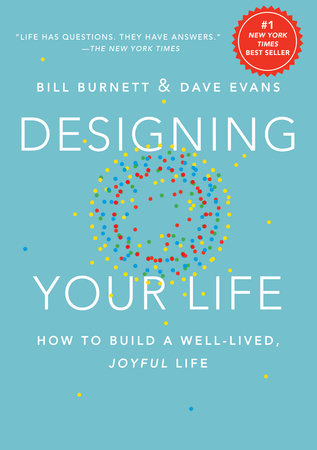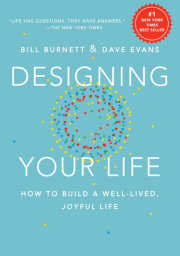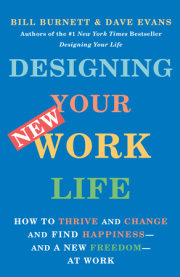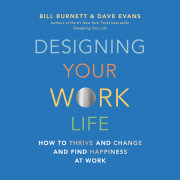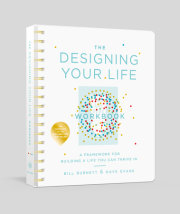Designers imagine things that don’t yet exist, and then they build them, and then the world changes. You can do this in your own life. You can imagine a career and a life that don’t exist; you can build that future you, and as a result your life will change. If your life is pretty perfect as is, life design can still help you make it an even better version of the life you currently love living.
When you think like a designer, when you are willing to ask the questions, when you realize that life is always about designing something that has never existed before, then your life can sparkle in a way that you could never have imagined. That is, if you like sparkles. It’s your design, after all.
What Do We Know?
In Stanford’s Design Program, we have taught more than a thousand students design thinking and how to design their lives. And we’ll let you in on a secret—no one has ever failed our class. In fact, it’s impossible to flunk. We have more than sixty years of combined teaching experience, and we have taught this approach to high school students, college students, graduate students, Ph.D. students, twenty-somethings, mid-career executives, and retirees wanting an “encore” career.
As teachers, we have always guaranteed our students “office hours for life.” This means that if you take a class from us we are there for you, forever. Period. We’ve had students come back to us over the years since they’ve graduated, and they’ve told us how the tools, ideas, and mind-sets that we teach have made a difference for them. We’re quite hopeful—and, frankly, pretty confident— that these ideas can make a difference for you, too.
But don’t take our word for it. Stanford is a very rigorous place. Though anecdotes are nice, they don’t count for much in academia. To speak authoritatively, you need data. Our class is one of the few design thinking classes that have been scientifically studied and have proved to make a difference for students on a number of important measures. Two doctoral students did their dissertations on the course, and what they found was pretty exciting.2 They found that those who took our class were better able to conceive of and pursue a career they really wanted; they had fewer dysfunctional beliefs (those pesky ideas that hold you back and that just aren’t true) and an increased ability to generate new ideas for their life design (increasing their ideation capability). All of these measures were “statistically significant,” which, in nongeek-speak, means that the ideas and exercises we lay out in our course and are going to walk you through in this book have been proven effective; they can help you to figure out what you want and show you how to get it.
But let’s be perfectly clear right from the start. Science or no science, this is all highly personal stuff. We can give you some tools, some ideas, some exercises, but we can’t figure it all out for you. We can’t give you your insights, change your perspective, and provide you with nonstop “aha” moments, all in ten easy steps. What we can tell you is that if you actually use the tools and do the life design exercises, you will generate the insights you need to have. Because here’s the big truth: there are many versions of you, and they are all “right.” And life design will help you live into whatever version of you is now playing at the Cineplex. Remember, there are no wrong answers, and we’re not grading you. We will suggest you do some exercises in this book, but there are no answers in the back to tell you how you did. We’ve added a recap of the exercises at the end of each chapter that has them—a Try Stuff box—because we suggest that you, well, try stuff. That’s what designers do. We’re not measuring you against anyone, and you shouldn’t measure yourself against anyone, either. We’re here to co-create with you. Think of us as part of your own personal design team.
In fact, we suggest you go out and get a design team right off the bat—a group of people who will read the book with you and do the exercises alongside you, a collaborative team in which you support one another in your pursuit of a well-designed life. We’ll talk about this more later in the book, and by all means you should feel free to read it on your own first. Many people think that designers are lone geniuses, working in solitude and waiting for a flash of inspiration to show them the solution to their design problem. Nothing could be further from the truth. There may be some problems, such as the design of a stool or a new set of children’s blocks, that are simple enough to be tackled by an individual, but in today’s highly technical world, almost every problem requires a design team. Design thinking takes this idea even further and suggests that the best results come from radical collaboration. Radical collaboration works on the principle that people with very different backgrounds will bring their idiosyncratic technical and human experiences to the team. This increases the chance that the team will have empathy for those who will use what they are designing, and that the collision of different backgrounds will generate truly unique solutions.
This is proved over and over again in d. school classes at Stanford, where graduate students create teams of business, law, engineering, education, and medical students that come up with breakthrough innovations all the time. The glue that holds these teams together is design thinking, the human-centered approach to design that takes advantage of their different backgrounds to spur collaboration and creativity. Typically, none of the students have any design background when they enroll in our classes, and all of the teams struggle at first to be productive. They have to learn the mind-sets of a designer—especially radical collaboration and being mindful of process. But once that happens, they discover that their abilities as a team far exceed what any individual can do, and their creative confidence explodes. Hundreds of successful student projects and innovative companies, such as D-Rev and Embrace,3 have come from this process, and are proof that collaboration is the way design gets done today.
So be a genius at your life design; just don’t think you have to be one of those lone geniuses.
Think Like a Designer Before you can do life design, you need to learn to think like a designer. We’ll explain a few simple ways to do this, but first you need to understand one really big point: Designers don’t think their way forward. Designers build their way forward. What does that mean? It means you are not just going to be dreaming up a lot of fun fantasies that have no relationship to the real world—or the real you. You are going to build things (we call them prototypes), try stuff, and have a lot of fun in the process.
Want a career change? This book will help you make that change, but not by sitting around trying to decide what that change is going to be. We’re going to help you think like a designer and build your future, prototype by prototype. We’re going to help you approach your own life design challenges with the same kind of curiosity and the same kind of creativity that resulted in the invention of the printing press, the lightbulb, and the Internet.
Our focus is mainly on jobs and careers, because, let’s face it, we spend most of the hours of our days, and the days of our lives, at work. Work can be a daily source of enormous joy and meaning, or it can be an endless grind and waste of hours spent trying to white-knuckle our way through the misery of it all until the weekend comes. A well-designed life is not a life of drudgery. You weren’t put on this earth to work eight hours a day at a job you hate until the time comes to die.
That may sound a bit melodramatic, but many people tell us that this is a good description of their lives. And even those who are lucky enough to find a career they love often find that they are frustrated and have a hard time designing a life that is balanced. It’s time to start thinking differently—about everything.
Copyright © 2016 by Bill Burnett. All rights reserved. No part of this excerpt may be reproduced or reprinted without permission in writing from the publisher.

